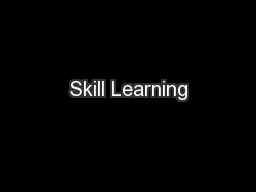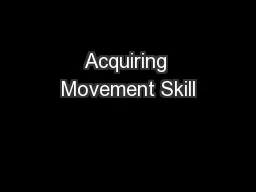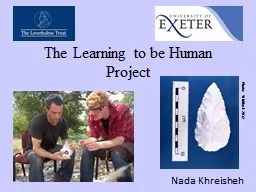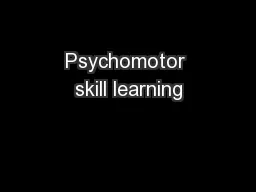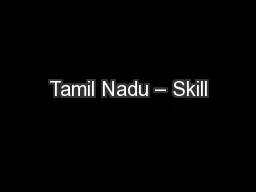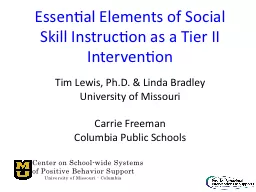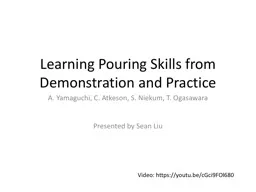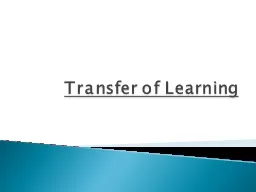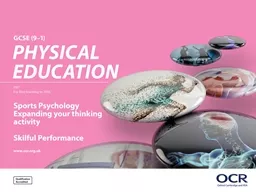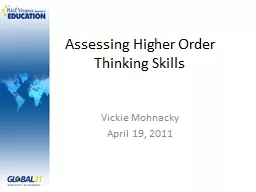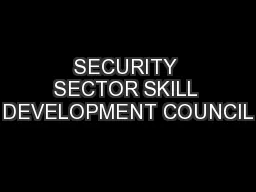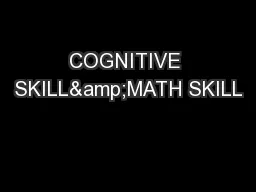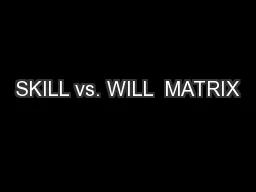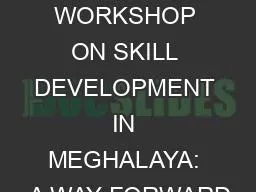PPT-Skill Learning
Author : karlyn-bohler | Published Date : 2017-12-11
STAGES OF LEARNING As we progress from a beginner to a skilled performer we must pass through different stages of learning There is no definitive point at which
Presentation Embed Code
Download Presentation
Download Presentation The PPT/PDF document "Skill Learning" is the property of its rightful owner. Permission is granted to download and print the materials on this website for personal, non-commercial use only, and to display it on your personal computer provided you do not modify the materials and that you retain all copyright notices contained in the materials. By downloading content from our website, you accept the terms of this agreement.
Skill Learning: Transcript
Download Rules Of Document
"Skill Learning"The content belongs to its owner. You may download and print it for personal use, without modification, and keep all copyright notices. By downloading, you agree to these terms.
Related Documents

